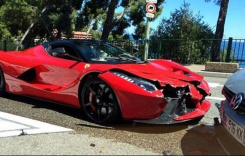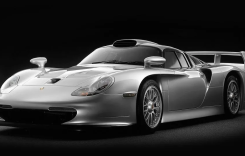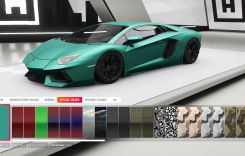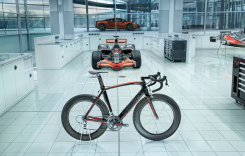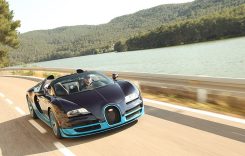Kawasaki’s Ninja 1000, winner of our 2014 Middleweight Sport-Touring Shootout, faces a direct challenge in 2016 from Suzuki’s all-new GSX-S1000F. These two Inline-Four powered literbikes both deliver sporty performance but in a more street-friendly package than their track-focused Superbike siblings. They represent an enticing option for sportbike riders willing to trade top-end horsepower for a broader more usable powerband, as well as ditch cramped track-biased riding positions for more relaxed upright ergonomics. These bikes are versatile too, capable of carving up canyons, tackling commutes and running up the odometer during an extended weekend away from home. And it doesn’t hurt that they’re several thousand dollars less expensive than their Superbike analogs either. Practical and affordable, we’ve been eager to compare the Ninja 1000 and GSX-S1000F side-by-side where their similarities and differences were revealed out on the open road.
Engine and Power Delivery
The heart of the Kawasaki is a 1043cc Inline Four with 77mm bore and 56mm stroke, the same mill used in the Z1000 streetfighter. Power output is managed by two engine modes, Full and Low, with the Ninja utilizing a three-mode Kawasaki Traction Control system. TC can also be turned off if the rider so desires. The engine is immediately responsive at the turn of the throttle, with impeccable fueling. The Ninja rewards riders with a linear and predictable power delivery from the early revs up to about 7000 rpm. Even in Full power mode the delivery in the lower revs is nicely manageable, no arm-yanking or front-end-popping unless you’re asking for it.

At around 7000 rpm there’s a jump in power which grows steadily until reaching its peak at 122.5 ponies at its 10,500 redline, though there’s comparable power available from 9700 rpm (122.2 hp) onward. Peak torque registered at 74.3 lb-ft at 7500 rpm during its run on the MotoUSA dyno.
The GSX-S1000F’s engine borrows a 2005-2008 version of the GSX-R1000 Inline Four, with some tweaks to the camshaft profiles to improve street performance, primarily in the low- to mid-range. It’s a 999cc Inline Four with 3.6mm smaller bore (73.4mm) and 3mm longer stroke (59mm) compared to the Kawi. There are no engine modes on the GSX-S1000F, but Suzuki has included its Traction Control System which offers three levels of sensitivity and an OFF setting. The mill is potent and responsive, but had a tendency to lunge on initial throttle application, whether from a stop of during roll-on in a corner. A more delicate throttle modulation alleviated the problem, but it lacked the buttery smooth engagement of the Kawasaki. Where the Suzuki shined was after acceleration had been initiated, with a sportbike-inspired powerband that gives and gives.
Peak torque output on the Suzuki is nearly identical to the Kawasaki, with 75 lb-ft available a little later in the rev range at 9000 rpm. But horsepower is superior, with 141.8 horses available at 10,000 rpm. The Kawasaki and Suzuki are almost identical in power output up to 8500 rpm, but after that the Suzuki keeps on going while the Kawi levels off.

Riding the two bikes side-by-side the Suzuki came off as the livelier mount, with more power and smoother delivery after the initial opening of the throttle. The Kawasaki’s bottom felt mellower against the Suzuki, even in full power mode, and while throttle application on the Ninja was more refined, the character of the GSX-S1000F engine was more appealing to our testers, especially in longer sweeping corners and on the freeway. Tighter turns were initially more troublesome, due to the throttle jump, but a more precise turn of the right hand mitigated even this issue.
Unfortunately the Suzuki has a jumpy initial throttle which made it more difficult to deal with in the tight corners than the Kawasaki,” explained test rider Jason Abbott. “Get past that initial throttle and you’re greeted with a strong linear power that pulls noticeably harder and longer than the Kawasaki.”
The Kawasaki is geared taller than the Suzuki, but vibration on the Kawasaki is much more prevalent above 6000 rpm. Coasting on the freeway above 7000 rpm in the 75–80 mph range left our testers with the lingering tingle of engine vibes in their feet, legs and hands. Even with the Suzuki running about 500 rpm higher at freeway speeds, engine vibration was nowhere near as acute.
“Mellow power delivery and plush suspension give the Kawasaki a great feel when cruising around town,” added Abbott. “Unfortunately when the rpms reach over 6000 the engine puts out some noticeable vibes through the chassis.”
Transmission

The transmissions on both bikes are dialed in, with precise, smooth shifts when rowing up and down the gearbox. Kawasaki’s primary upgrade to the 2016 Ninja 1000 was to add new assist and slipper cams to the clutch, to give the bike a lighter pull at the lever and help stabilize the rear wheel during heavy downshifting. Engagement at the lever of the Ninja is progressive, and pull is light, but not quite as easy as on the GSX-S1000F. A blip of the throttle is still helpful to ensure that downshifts are seamless, as it is on the Suzuki. Between the two bikes it’s basically a draw in terms of transmission performance, though, as mentioned previously, the Kawasaki is geared taller and cruises at highway speeds lower in the rev range.
Handling and Suspension
The Suzuki felt lighter at the bars, turned in quicker and had a more nimble, sportbike-feel compared to the Kawasaki. The GSX-S1000F felt stiffer in the suspension department, but the 43mm KYB fork offers three-way adjustment and single KYB shock is adjustable for preload and rebound.
The Kawasaki was plush and even somewhat soft out front, but its 41mm fork and horizontally-mounted shock are similarly adjustable. However, the set-up out back has the added benefit of a remote preload adjustment dial, which will be especially useful for riders looking to quickly account for luggage or a passenger.
The Ninja required much firmer input at the bars to settle into turns, and the 511-pound machine (curb weight) wears its heft noticeably in comparison to the 474-pound GSX-S1000F.That being said, both bikes tracked a line through the corner well and responded immediately to adjustments when leaned over. Both remained composed in the twisties and provided a comfortable, non-jarring ride on the portions of the LA freeway we traveled, with its many imperfections. However, the Suzuki inspired more confidence to push harder through the turns, another example of its sportbike bent.
Braking

Suzuki takes the cake in terms of braking performance, with its Brembo monoblocs out front providing superior feel and response at the lever. The initial bite isn’t especially strong, but once engaged the binders offer more modulation feel as they grip the dual 310mm rotors. Its rear brake is soft on initial application but performs up to the task when needed.
“The Brembo front brakes on the GSX-S1000F are definitely one of its stand-out features, especially when you need to stop in a hurry,” said Abbott.
The Kawasaki’s four-piston calipers grip dual 300mm discs and perform well, but don’t offer the level of response and feel as the kit on the Suzuki. Out back, the rear brake responds more quickly than the Suzuki and offers comparable feel once engaged. The Kawasaki’s ABS system kicks on more quickly and noticeably than the Suzuki’s as well.
Ergonomics
The cockpit of each bike contributed to our handling impressions. The Suzuki feels slimmer in the seat, with the footpegs a bit higher, contributing to a more sporty riding position. The Kawasaki has a wider, more squared-off seat and more upright riding position. The differences are slight, but it was easier to tuck in behind the bubble on the GSX-S1000F than on the Ninja.
“The seat on the Kawasaki was very uncomfortable for my 5’11” build,” Abbott said. “It has a noticeably wider construction and harder foam than the Suzuki’s slim and plush unit.”
Sitting up was also fuss-free on the Suzuki when off the attack. However, the GSX-S1000F’s static windscreen sits down lower than the three-position adjustable Kawasaki screen, so we noticed the wind hitting our helmet more on the Suzuki than the Kawi. The increased wind protection encouraged us to sit more upright in the Ninja’s saddle. This made us feel slightly taller on the Kawasaki ¬– a sensation enhanced by the small difference in seat height between the two bikes, with the Ninja measuring 32.3 inches and the Suzuki 31.9 inches.
Electronics

As mentioned, the Kawasaki has two engine modes available and three levels of traction control. The left switch gear allows for simple, intuitive movement through the system, but we didn’t notice much by way of difference between the two engine modes. We did not, however, encounter rain or excessive debris on the road in drought-stricken southern California. We noticed the most difference in the highest traction control setting, with power to the rear markedly decreased.
The Suzuki has only one engine mode, but four-level traction control, three levels and an OFF option. Again, we didn’t encounter extreme weather or road conditions, but we did notice that in its highest, Level 3 setting, the throttle jump on initial application was marginally reduced.
Kawasaki has a less cluttered instrument console, utilizing an analog tachometer alongside a digital speedometer and display including fuel gauge and tripmeter. Suzuki’s console is all digital and more compact, and it includes a gear indicator, a feature noticeably absent on the Ninja.
Touring Amenities
Out of the two bikes, the Kawasaki is a more capable touring rig thanks to its more upright ergos, adjustable engine maps, friendlier power delivery, taller adjustable windscreen, remote rear suspension adjustment and ability to quickly accommodate optional OEM saddlebags and other touring accessories.
“Adjustability is a strong point for Kawasaki,” said Abbott. “The Ninja 1000 features both power mode and traction control adjustment, the rear shock has a remote spring preload adjustment knob that is easy to adjust when adding the available OEM saddlebags and the windscreen is easily adjusted in multiple positions.”
The Kawasaki’s color-matched, 28-liter hard saddlebags will set you back an additional $899 dollars, but they are easily mounted to the stock bikes luggage mounts. Aftermarket hard saddlebags for the Suzuki will require a more intensive installation process.
Fuel consumption and range between the two machines is comparable. The Kawasaki averaged 38.9 mpg, with its five gallon tank delivering almost 195 miles between fill-ups. The Suzuki lacks a half- gallon of fuel capacity compared to the Kawasaki but averaged 40.6 mpg, yielding close to 183 miles per tank.
Etcetera

In terms of looks, a judgment that’s about as subjective as it gets, we found ourselves drawn more to the GSX-S1000F than the Ninja. The single-sided, lower-profile exhaust pipe were preferred, the lines of the fairing as they lead-into and accentuate the shape of the tank more appealing. The front of the GSX-S1000F has a hawk-like look to it, enhancing the sporty visage of the machine. The Kawasaki is striking as well, with aggressive lines clearly indicating its place in the Ninja family, but it’s stance was more bulky to our eyes when standing next to the GSX-S1000F.
Pricing was another point of departure between the two bikes, the Ninja ringing in at $11,999 and the Suzuki pricing $1000 less at $10,999. For cost-conscious sportbike riders, the GSX-S1000F’s attractive MSRP can’t be ignored.
Conclusion

In the end the decision was close, but it came down to which bike felt more capable all around. That do-it-all machine for us was the GSX-S1000F.
“Without a doubt the Suzuki GSX1000s has the most complete package of the two motorcycles we tested,” Abbott explained. “Strong power, excellent rider comfort and the ability handle both canyon and freeway riding with ease making it a very versatile machine.”
Its sportbike handling, lively but usable engine, comfortable ergonomics, lighter weight and superior braking allowed it to shine in a variety of settings, from tight twisties to lanesplitting on the freeway. The Kawasaki is an absolutely wonderful machine, and one we’d suggest in a heartbeat if a rider was looking to take longer tours (with a seat upgrade that is), but its additional weight, heavier handling and mellower engine character weren’t as inspiring as the new ‘Zook.

